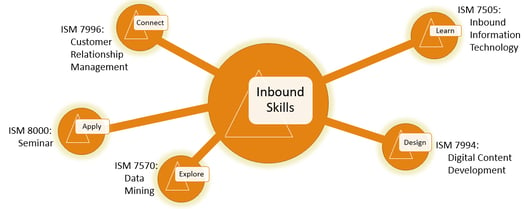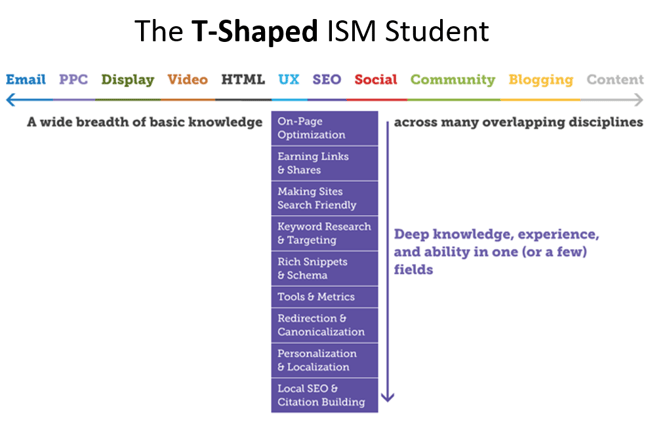As the Program Manager for the Education Partner Program, I work to support the professors who are transforming the way marketing and sales are taught around the world.

Through research, application and teaching, these professors think deeply about how the world around us is changing, and how to prepare students to meet those changes head on.
I recently sat down with John Heinrichs, Associate Professor of Inbound Information Technology at Wayne State, to discuss his thoughts about teaching the next generation of Inbound practitioners. Read on for the full interview!

Thanks for taking the time to tell us your story, John. To get started, could you tell our readers a little about yourself?
Sure. I'm John Heinrichs. I am an Associate Professor in the Management and Information Systems Department in the Ilitch School of Business at Wayne State University in Detroit, Michigan. I teach Information Systems Management (ISM) courses at both the undergraduate and graduate level. I have focused my research on “How to move the organization to competitive advantage using information technology”.
One of the classes that you teach is called Inbound Information Technology. That's a topic many readers might not be familiar with. So, what is Inbound Information Technology (IIT)? Why is it an essential part of doing business?
This is a fascinating question, with the follow-up question of, “Where does IIT end and marketing begin?”
This is where the “T-Shaped” student (slightly modified from the original Moz format) can be created. The T-Shaped students gain business knowledge and combine it with Information Systems technical skills to create the Chief Marketing Technologist persona. This is where technical, hands-on education occurs.

The education with HubSpot demands more. We have integrated our HubSpot with Wistia and have expanded to use the Ads Add-on. We focus on SEO, inbound links, RSS, blogging, page ranking, tagging content, tweeting, publishing content, SERP, and social media. In addition, we focus on understanding how to use the internet to position your organization in cyberspace. The key to this positioning is understanding how to create personalized, responsive, smart, and dynamic content using web technologies such as HTML5, CSS3, and HubSpot.

You've been teaching Inbound in the classroom for some time now. What have been the key inflection points in the industry and how has that impacted the way you teach?
In 2010, with the advent of social media, mobile, and cloud computing, business organization alignments began to change. Digital advertising could suddenly be measured, so spending could be allocated appropriately because its impact could now be justified, attributed, and analyzed. Social media began to take off and changed how consumers engaged with brands.
Consumers now controlled the conversations. The rise of mobile devices meant consumers could be reached while standing in the checkout line. With mobile devices and social media, consumers could be reached anywhere, anytime. Yet, reaching those consumers required skilled individuals that could create mobile apps, implement cloud computing solutions, analyze data, and integrate social media. So, ISM students were brought in to implement these requirements.
In 2012, Laura McLellan, Research Vice President of the Gartner Group, predicted that by 2017 the current CMO – Chief Marketing Officers – would be spending more on Information Technology (IT) than CIO – Chief Information Officers – and CMOs would be hiring more ISM trained professionals than traditional marketers. The discussion on the placement of “Inbound” within ISM or other departments such as Marketing had begun in earnest.
In 2014, HBR – Harvard Business Review (July/August) – joined this discussion with their article entitled, “The Rise of the Chief Marketing Technologist.” HBR agreed that marketers will spend more on technology than the IT professionals would spend! In fact, marketing technology budgets have now surpassed the marketing advertising budgets in organizations!
Fastforward to today, and over 33% of the marketing budget is now allocated to technology. The obvious conclusion reached in their article is that Marketing is the most technology-dependent function in the business organization and managing technology effectively was a becoming a very high priority. An MBA student completing an Inbound Information Technology (IIT) concentration would be the logical candidate for that role.
In 2015, Accenture reported on how to address the evolving IT challenge as marketing had become increasingly data-driven, technology-enabled, and technology-dependent. There has been discussion of the emerging role and responsibilities of the new “Marketing CTO – Chief Technology Officer”. This is good news as this role is a natural fit for the CIO. The idea of a CIO becoming a CMO (aka Marketing CTO) isn't as far-fetched as you might think according to Sherrie Haynie, organizational development consultant at CPP! Further, the Accenture report states that 25% of current CMOs cite lack of critical technology skills/technology tools as their biggest challenge. Thus, it is becoming apparent that how to implement the technology infrastructure required by businesses to remain competitive is the new paradigm or evolving business model. As the 2014 HBR article indicated, you cannot simply split marketing technology down the middle – King Solomon style. It must be effectively managed.
In 2016, Scott Brinker writes, when you realize that marketers are “up to their chins” in websites (software), analytics (software), social media (software), marketing automation (software), interactive content (software), mobile apps (software), and so on, the solution to where “Inbound” should be placed in the Business School starts to become very obvious. The art of managing marketing increasingly resembles the art of managing software. This is the skill area of the current CIO.
Today, the technology landscape represents over 3,800 solutions/applications in the areas of sales automation, enablement & intelligence, social media marketing & monitoring, display & programmatic advertising, marketing automation & campaign/lead management, and content marketing and that is even before the discussion of databases, cloud infrastructure, big data, and web development!!
Mike Brinker, Deloitte Digital (2016), states, “We’re creating completely new markets and ways of doing things where digital and physical are going to collide. Every physical device will have digital device embedded in it.” He argues, “We challenge companies and brands to completely rethink the industry they’re in. Forty percent of the Fortune 500 companies right now will not be here in 10 years. We do believe there’s no industry, no sector and no company that’s immune to this kind of significant disruption.”
In this particular area, our students have shifted from being in a supporting role, to taking a leadership position in organizations. They will become the new Marketing CIOs – they will become Production CIOs. They will lead the organizational transformation as every product/service will have a digital device embedded and information integration will be required.
How did you find HubSpot?
About six (6) years ago, I was doing research in various areas of social networking analysis, social media, and mobile computing and uncovered the “Inbound Marketing University” series of courses taught by HubSpot. I began to incorporate these topics in my courses. I was hooked.
I applied for an “Innovation and Development Fund” grant to cover additional expenses such as taking students to the Inbound conference and course development and then my manager (now the Associate Dean) agree to cover the expense for the software. I acquired a HubSpot Enterprise license – and continue to use this license to support the various IIT classes.
Why did you decide to partner with HubSpot in your classroom?
HubSpot has a tremendous culture. HubSpot has proven itself as the leader in the marketing automation / web development / CRM arena.
We are expanding beyond just using HubSpot software in the classroom – we are moving to partner with HubSpot for the entire educational experience!
This education experience includes internships. This includes incorporating the HubSpot User Groups for networking. This includes asking HubSpot customers to be guest speakers. This includes using HubSpot for the Student Organization competitions – previous competitions included the “Big Data Analytics Challenge” where students used the reports feature from HubSpot enterprise to develop insights into the business website.
How have the HubSpot certifications prepared your students to enter the working world?
Ask hiring organizations – they demand it! Our surveys indicate, “The applicants we were most interested in had Hubspot certification”, “Learn about the basic concepts such as SEO, blogging, social media best practices”, “Take the training courses.”
HubSpot has developed many outstanding certification programs. These certifications add to the student’s academic experience and proclaim that “someone else” recognizes I have earned these skills and have these abilities.
Earning the various HubSpot certifications provide students with the ability to ask detailed questions during interviews. They are in a better position to assess whether the interviewing organization is in a position to help them grow professionally.

